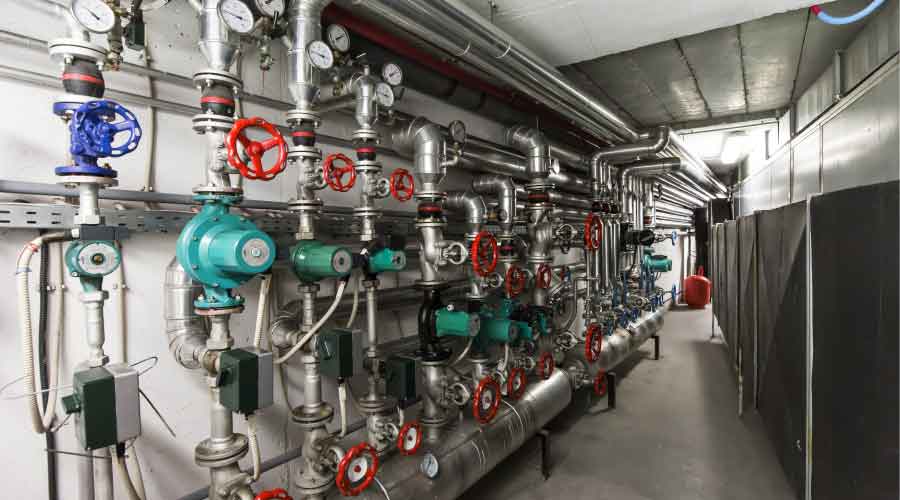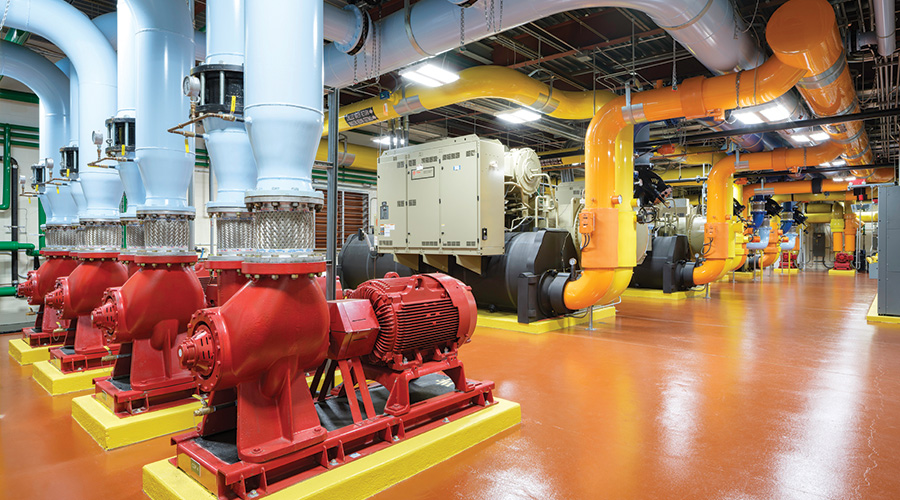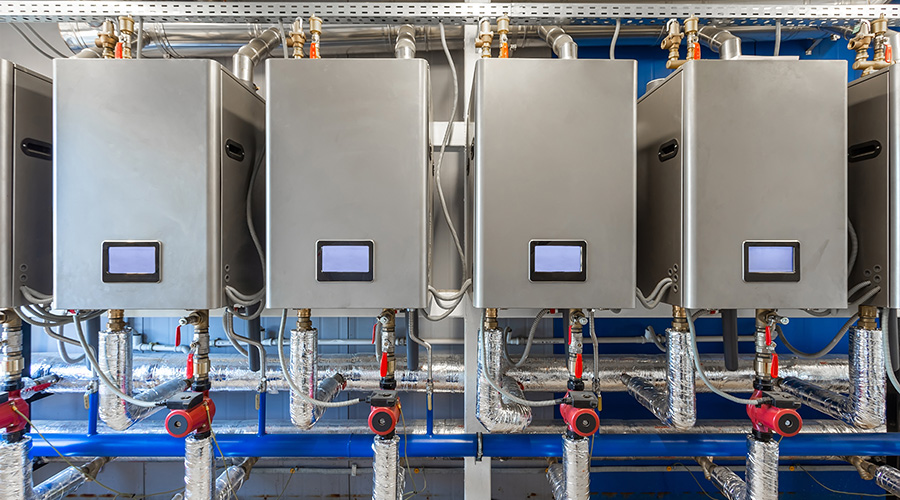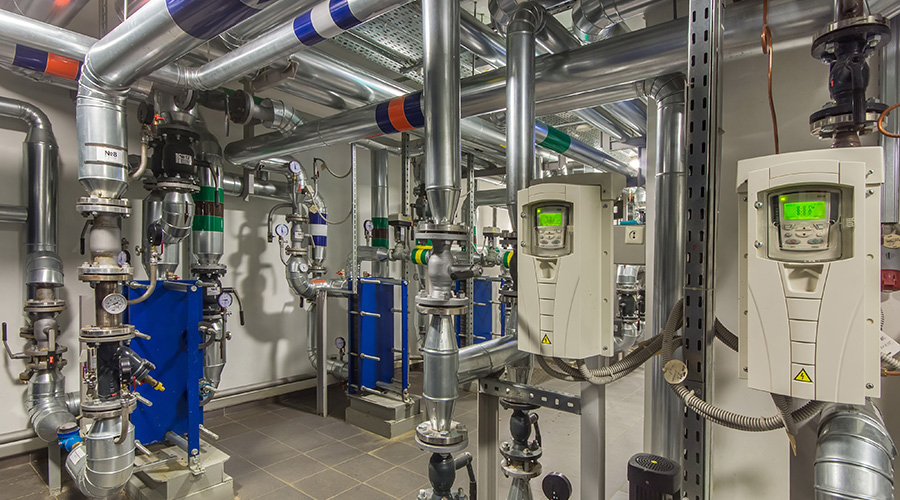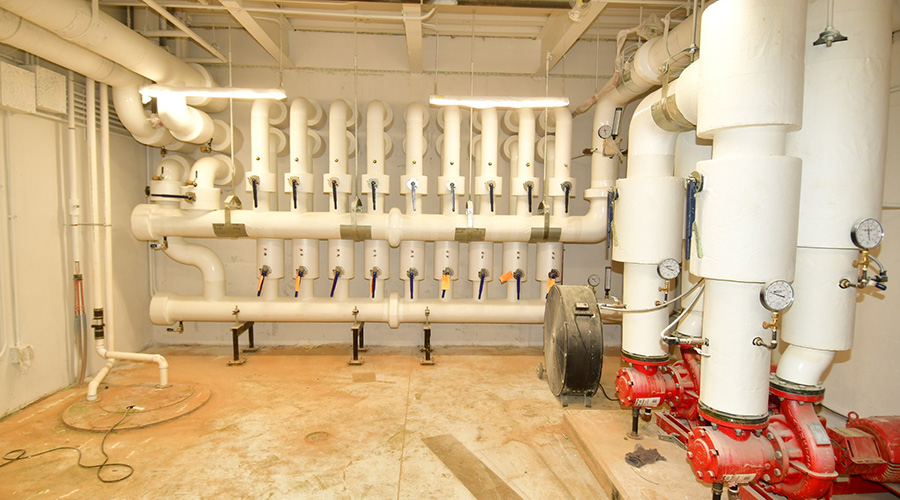How to Select the Right Boiler or Water Heater System
Considerations from first cost to energy performance help match the right equipment to your specific facility’s needs
By Scott Czubkowski, Contributing Writer
If new HVAC equipment like a heat pump or chiller is needed at an institutional or commercial facility, chances are facility managers will spend a good deal of time researching different models, pros, cons and energy efficiency associated with each option. Energy efficiency is usually top of mind for facility managers when choosing new equipment. Other considerations include lower environmental impact, lower utility expenses, and less maintenance costs, but ultimately it comes down to what overall facility needs are and how this new equipment can best meet those needs. Upgrading a boiler or water heater is no different.
Knowing that each building has unique needs and serves a different purpose, choosing a boiler and water heater for these facilities should not be a flippant task as they serve a critical function in providing a quality occupant experience.
Steam vs. hot water boilers
When shopping for a boiler, managers may find themselves grappling with whether to select a steam boiler or a hot water boiler. Again, this will come down to the facility’s needs and how these needs fit into larger corporate sustainability goals. Is the need located in an area that is remote from the central utility plant? If so, a steam boiler might be a better option since they are more efficient at transferring heat throughout the building, for example a smaller pipe size with more British thermal unit (BTU) transfer. Or is the existing high-pressure steam system beyond useful life? Is it time for a system refresh that yields more energy savings? In this case, a water boiler may be the answer because they use less energy to serve heat loads and are easier to service. Asking these questions can help determine which option is better suited for the building.
Another consideration is which system is best for energy efficiency. As one example, medical facilities are known to serve equipment that are major consumers of energy, and leaders are always looking for ways to address their environmental footprints. However, many managers find themselves having to balance energy efficiency costs, life cycle costs, and occupant safety, which often leads to them having to choose a less-than-optimal solution for retrofit-type projects. One point for facility managers to keep in mind is that hot water boilers are generally more efficient as they could be 20 to 40 percent more efficient than steam boiler systems, require less maintenance, use fewer chemicals and may be the more cost-effective system in the long run.
Dual fuel sources are a must
Heating systems can run on a variety of fuel sources, whether it’s gas, propane, oil, or electricity. Facilities must consider a dual fuel source for this equipment so one can serve as a backup source if the primary becomes unavailable. This is especially true during a disaster when a facility would need to temporarily rely on a backup fuel option if the natural gas lines need to be shut off, for example. When facilities are the first point of refuge for the community during an emergency, they must be functional during these times. This makes having a dual fuel source that much more important.
A recent example of dual fuel operations took place at many facilities during the extreme cold weather in February 2020, when many facilities lost access to natural gas due to supply disruptions and facilities fuel switched to #2 fuel oil for days until the distribution system stabilized.
When it comes to deciding what fuel sources to incorporate into the boiler system, consider climate and whether the area experiences changes in the seasons. A facility may opt to have electricity as a backup source not only because it could be a more energy-efficient option, but also because it could be a solution for use in the winter when facility peak demand loads typically operate below summer electrical demand limits.
Anticipate future needs
The average lifespan of heating equipment is anywhere from 15 to 40 years depending on the type of boiler, preventive maintenance and the quality of water treatment. As facilities expand, facility managers must anticipate these changes and leave some wiggle room to allow for those adjustments down the road. One option is to pick a modular configuration such as pre-piping equipment headers for additional boilers, which may be better suited if a facility is predicting substantial growth over the next several years.
Facility managers must also take into account fuel lines, distribution headers, electrical provisions, and the space where the boiler or water heater will be located if an expansion is being considered.
Choosing any new system for a facility can be a daunting task, but evaluating the facility’s needs and connecting them to a model that checks all of those boxes can make the process a bit more digestible. While boilers or water heaters might not be visible to occupants when they utilize a facility, both devices play a vital role in providing them a quality experience and should be approached with the utmost care and urgency.
Scott Czubkowski, PE, CHC, serves as the national director for energy and facility performance at Medxcel.
Related Topics:








